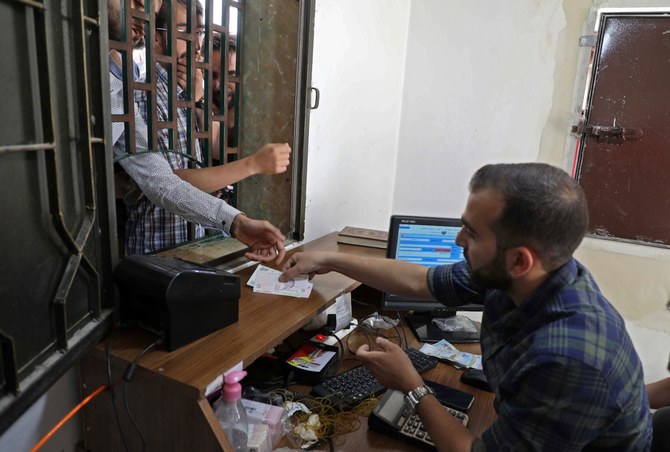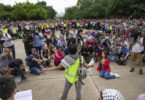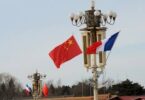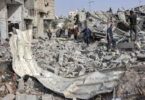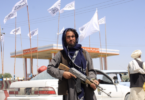Dr. Majid Rafizadeh
One of the most pressing issues for the Syrian government to focus on is leading the nation into a sustainable economic recovery. Syria has been facing an unprecedented economic crisis. Several factors have contributed to this problem. The internal conflict, which began more than 12 years ago, has had a negative impact on the nation’s economy. Civil wars can inflict damage on infrastructure and, more importantly, disrupt production and manufacturing processes.
In addition, in a conflict-affected nation, private and state organizations become extremely reluctant to invest their capital in the country due to the political instability and uncertainty. Foreign direct investment can play a critical role in generating revenue and addressing the nation’s budget deficit. For example, before the civil war began in Syria, according to the Atlantic Council, capital inflows “comprising mainly foreign direct investment from other Arab countries and Europe led to overall balance of payment surpluses and increases in the international reserves holdings of the Central Bank of Syria that reached $18.2 billion at the end of 2010.” But it is important to point out that the protracted civil war is not the only reason for Syria’s economic crisis. The economic outlooks of other countries often impact their neighbors. In this case, the Lebanese and Turkish economies have also affected Syria’s economy. In Lebanon, the ongoing cash crisis and economic meltdown continues to grow, with the currency regularly hitting new lows.
In addition, Syria used to be a net crude oil exporter, but it is now relying on other countries to import oil. The cost of this switch from exporting to importing has been more than $100 billion in losses for this Arab country since the beginning of the civil war. The aforementioned issues have also contributed to the devaluation of the currency in Syria. Syria’s currency was trading at about 47 pounds to the US dollar just before the unrest erupted in 2011. However, it recently hit an all-time low and $1 is now worth about 9,000 Syrian pounds. Inflation is also reportedly at its highest level. While the average inflation rate from 1957 to 2020 was about 11 percent, it last year reached 139 percent – higher than countries such as the Democratic Republic of the Congo, Angola and Libya. This places it fourth in the world in terms of highest inflation rates, only ranking behind Venezuela, Sudan and Lebanon, according to World Population Review. To put this in perspective, Syria’s inflation rate is about 40 times higher than the average in the Arab Gulf states. The likes of Kuwait, Bahrain, Saudi Arabia, the UAE, Qatar and Oman are among the countries with the lowest inflation rates in the world. It is worth noting that a healthy and standard rate of inflation is about 2 percent to 3 percent per year. The problem is that the skyrocketing inflation is drastically affecting Syrians’ purchasing power, making life extremely difficult for ordinary people. Huda, a single mother of two and a teacher, pointed out that: “Before the unrest started, I used to make 10,000 lira (pounds) a month, which was around 200 US dollars. I could afford food, doctors and basic necessities, and I could save. Now, I am making 120,000 lira, which is around 15 US dollars. Prices of everything keep going up every day. I cannot make ends meet and I cannot even afford (to buy) enough food with this salary, let alone pay for utility bills, clothes, children’s school, medicine, and other important things. Bread alone costs me around 4,000 lira a day, that is 120,000 a month, which is my salary now. A lot of people are living on assistance from charities and from borrowing money.” Some areas in Syria are experiencing an unemployment rate that has reached a staggering 85 percent. Before the unrest erupted in Syria, the national unemployment rate was about 9 percent. As prices have increased by more than 800 percent in the last two years alone, nearly 90 percent of the Syrian population now lives below the poverty line.
According to the World Bank, due to high uncertainty, Syria’s real gross domestic product is projected to “contract by 3.2 percent in 2023, following a 3.5 percent decline in 2022. Conflict, high input costs, and water scarcity are projected to limit crop production.
In addition, fuel shortages are expected to further weaken manufacturing and disrupt transportation and services.” To address its financial woes, the Syrian government needs to implement major structural changes and reintegrate itself into the global financial system. This will bring the country out of isolation. More importantly, if the Syrian government concentrates on the reconstruction of the nation’s infrastructure, this can play a key role in creating jobs and improving the economy. This mission can be more effectively achieved if Damascus is able to attract investments from other countries. The Syrian government must also adequately address the country’s economic mismanagement, the lack of a robust private market, corruption, and the predominantly state-controlled economy, which has led to socioeconomic disparity and pushed more people into poverty.
Establishing safety nets and social protection mechanisms are critical as well. Any state’s monopolization of the economy may benefit the people on top, but it prevents the overwhelming majority of the population from prospering economically. In a nutshell, ordinary people and families in Syria continue to bear the brunt of the ongoing economic crisis. The government must put economic recovery at the top of its agenda.

